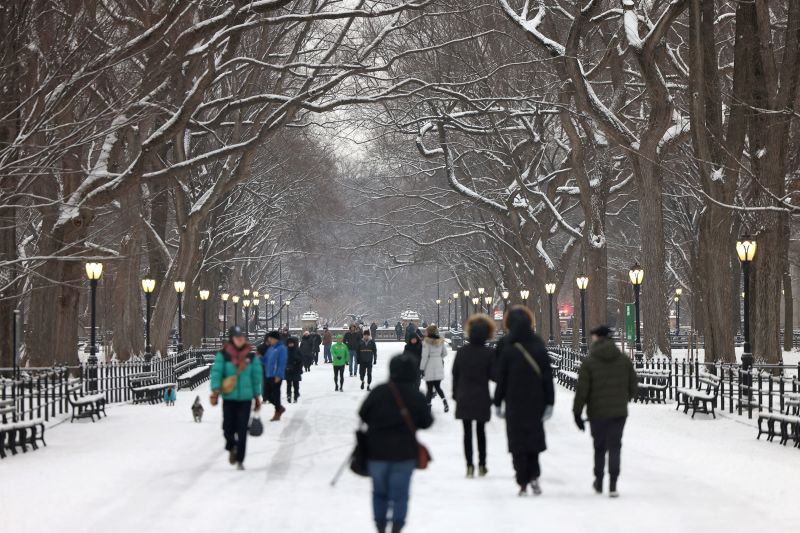
Mother Nature's Dramatic Weather Pattern Change

A dramatic weather pattern change is coming next week that will flip the brutal cold on its head. Sick of the cold? Mother Nature has a change in store, a change that will bring unseasonably mild conditions across the mainland US.
The Brutal Cold: A Recap
Sick of the cold? Mother Nature has a change in store. Over the last week, the continental US has experienced a brutal cold spell, with wind chills plunging below minus 40 degrees in parts of the central US. It smashed hundreds of temperature records, produced one of the coldest NFL games on record, and made for the coldest Iowa caucuses ever held.
A person makes his way to the Omni Mount Washington Resort toward the Nikki Haley event during a bad snow storm in Bretton Woods, New Hampshire, on Tuesday, January 16.
Enough snow fell in New York, Philadelphia, Baltimore, and Washington, DC, to end nearly two-year-long waits for an inch of snow. School districts in more than half a dozen states announced closures amid frigid temperatures, and thousands of flights were canceled or delayed. Tornadoes were reported across Florida, Alabama, and Georgia, causing significant damage and road closures.
People walk in New York's Central Park on January 16. Enough snow fell in New York, Philadelphia, Baltimore and Washington, DC, to end nearly two-year-long waits for an inch of snow there.
Responders rescued people from structures in Florida's Bay County, where multiple tornadoes hit the ground. In addition, the vast majority of Iowa was under a blizzard warning, and New Jersey Gov. Phil Murphy announced a state of emergency to prepare for the potentially dangerous weather.
Icicles hang from limestone along Interstate 65 in Nashville, Tennessee, on January 16.
The Dramatic Weather Pattern Change
By next week, frigid cold will be a distant memory across the mainland US as unseasonably mild conditions wipe out the chill. In some spots, it’ll feel more like March than January. Above-average temperatures are forecast for the entire Lower 48 starting Tuesday, according to a temperature outlook from the Climate Prediction Center.
Snow falls on parked cars in Concord, New Hampshire, on January 16.
A significant shift in the weather pattern in the upper levels of the atmosphere, where the jet stream flows, is driving this change. The jet stream will be positioned farther north across the US next week, trapping very cold air in Canada and allowing warm air from the tropics to surge northward into the US.
A worker spreads a composite of ice melter and salt on sidewalks at the Mississippi State Capitol in Jackson on January 16.
The Impact of the Weather Pattern Change
The warming trend will begin as early as Sunday for parts of the West and north-central US. Milder conditions will expand in scope and strength across more of the country gradually early next week. Chicago could finally rise above freezing on Monday, and the most drastic temperature changes from week-to-week will happen by midweek in the central and eastern US.
A snow-covered school bus sits in a parking lot in Wheeling, Illinois on January 16. School districts in more than half a dozen states announced closures amid frigid temperatures.
Parts of the Plains and Midwest will flip from temperatures 30 to 40 degrees below average last Sunday to temperatures 10 to 20 degrees above average by next Wednesday. Both Des Moines, Iowa, and Minneapolis will undergo 40- to 50-degree temperature swings from this week’s brutal cold to next week’s unseasonable warmth.
People pass through a snowy Rock Creek Park in Washington, DC, on Monday, January 15.













